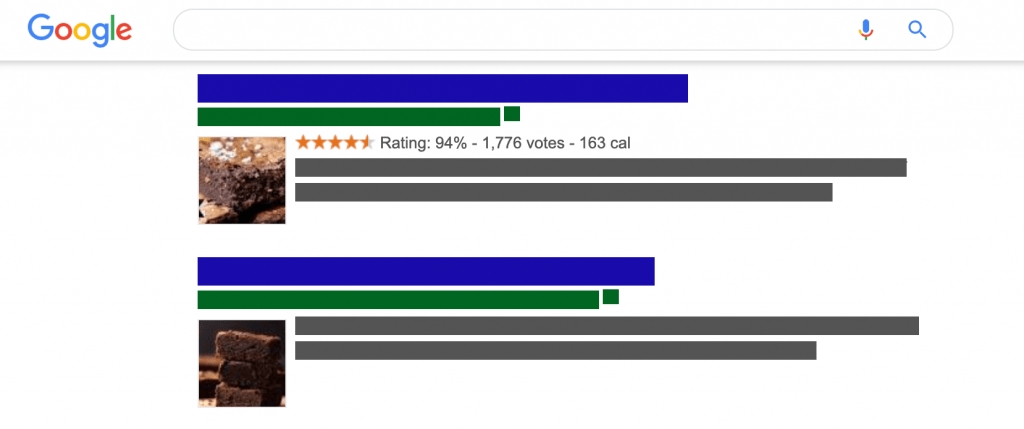
Google is gradually moving away from the traditional plain blue link snippets by introducing graphical and interactive elements in their search results, on both desktop and mobile devices.
One of these elements is rich snippets and, in this post, you will learn everything you ever need to know about rich snippets.
In particular, you will learn:
- What are rich snippets?
- Why are rich snippets important for SEO?
- Best Practices on how to get rich snippets
What are rich snippets?
Rich snippets or rich results as they are sometimes called, are an enhanced version of a normal search snippet that usually includes graphical elements like images, review stars, and other visual enhancements.
A normal search snippet includes the following items:
- Title
- URL
- Description
- Date (not always)
A rich snippet may include one or more of the following elements:
- Title
- URL
- Description
- Date information
- Product Images
- Product Reviews
- Ratings
- Price information
- Name of the website
- Icon of the website

Notice that besides the title, URL and description, the snippet also shows an image, star ratings, number of reviews, minutes to prepare and total calories.
Rich snippets in just one of the available Google search results features. Other search features include:
Enhancements – for example showing a website’s search box within the Google results.
Knowledge graph cards – they show more details for a known topic or brands.

Featured Snippets – Shows on top of the results and usually provides a direct answer to a question or query. It includes text and images.
Read this guide for step-by-step instructions on how to get a google featured snippet.

OneBox result – shows a tool directly in the search results. For example, when asking for time, translation and currency related queries.
Rich Results and Enriched Search Results
Enriched search results are interactive rich snippets. They have the same properties as a rich snippet, but they also give users the ability to interact with a snippet without leaving the Google search page.
A typical example is the new job posting snippet which allows users to apply filters like location or job title to find exactly the job they are looking for.
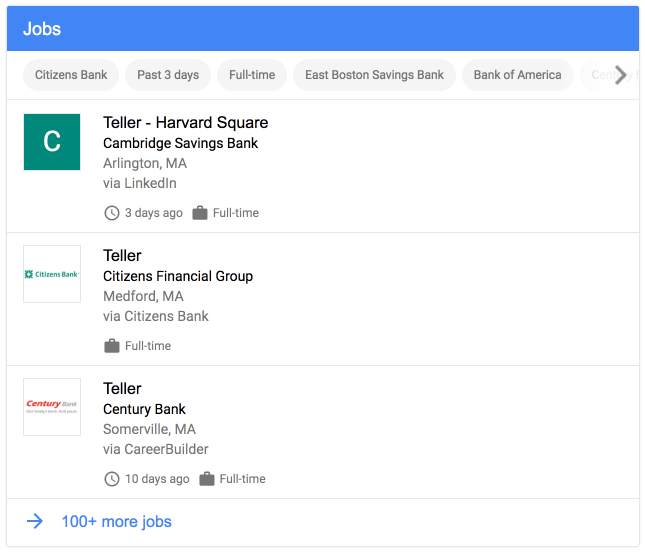
Why are Google rich snippets important for SEO?
There are many reasons as to why Google rich snippets are becoming very important for SEO.
Higher Organic CTR
The first one is a higher organic CTR (Click Through Rate), which translates to more visits to your website.
Before introducing a new search feature, Google does several tests to ensure that this is what users want and rich results have been positively accepted by users.
Let your website shine in the search results
The second one is that rich snippets stand out in the SERPS and websites that don’t have a rich snippet have less chances of getting clicks.
If your competitors have already implemented rich snippets, then you really have no option.
For example, look at the listings below, which snippet would you NOT click?

Get your website ready for other Google search features
Finally, by preparing your website for rich snippets you make it friendlier to search engines and this increases your changes of ranking for Voice search and other Google features (Google Assistant, Google Maps) that rely on schemas and structured data.
Best Practices on How to Get Rich Snippets
Now that you are convinced that getting a rich snippet is the way to go, let’ see how to get it.
Your website to be eligible for a rich snippet needs to have structure data implemented in your HTML.
Without structured data, it will be very difficult for Google to show your website in the rich results.
It should also be noted though that even if you have structured data, there is no guarantee that it will show as a rich card.
What is schema and structured data?
Schemas help search engines understand the meaning of the content. All major search engines agreed to a set of common standards (called schemas) which allows webmasters to describe parts of their content to search engine crawlers. This is done by adding pre-defined tags (structured data) that search engines understand.
For more information and step-by-step instructions read: What is schema markup.
Besides implementing structured data, there are other factors that play a role like:
- The search query to be suitable for a rich snippet. Google does not show rich snippets for all queries. It depends what the user is searching, the location and device.
- Structured data needs to be accurate. If you try to trick Google by providing structured data that does not accurately represent the page content, you will end up with a Google Penalty.
- Correct implementation. Your code must match the requirements specified by Google.
- Your page should adhere to Google Webmaster Guidelines. Google will not show snippets for websites that are spammy or not trusted.
- Some features are only applicable for AMP pages only.
How to get a rich snippet
Step 1: Choose the right snippet type
The first step is to go through the list of supported types and choose which one (s) accurately represents your content.
Google currently supports the following types:
- Article
- Book
- Breadcrumb
- Carousel
- Corporate Contact
- Course
- Critic Review
- Dataset
- Employer Aggregate Rating
- Event
- Fact Check
- Job Posting
- Livestream
- Local Business
- Logo
- Media Actions
- Occupation
- Product
- Q&A Page
- Recipe
- Review Snippet
- Sitelinks SearchBox
- Social Profile
- Speakable
Bing supports these types:
- Breadcrumbs
- Business and organizations
- Events
- People
- Products and offers
- Recipes
- Reviews
- Reviews (aggregated)
- ClainReview (aka Fact Check)
Which features are best for my website?
This depends on your content. There are some types that are suitable for all websites like breadcrumb, images, organization or person, articles but besides that, it depends on your content.
Google gives some guidelines on which search features to use.
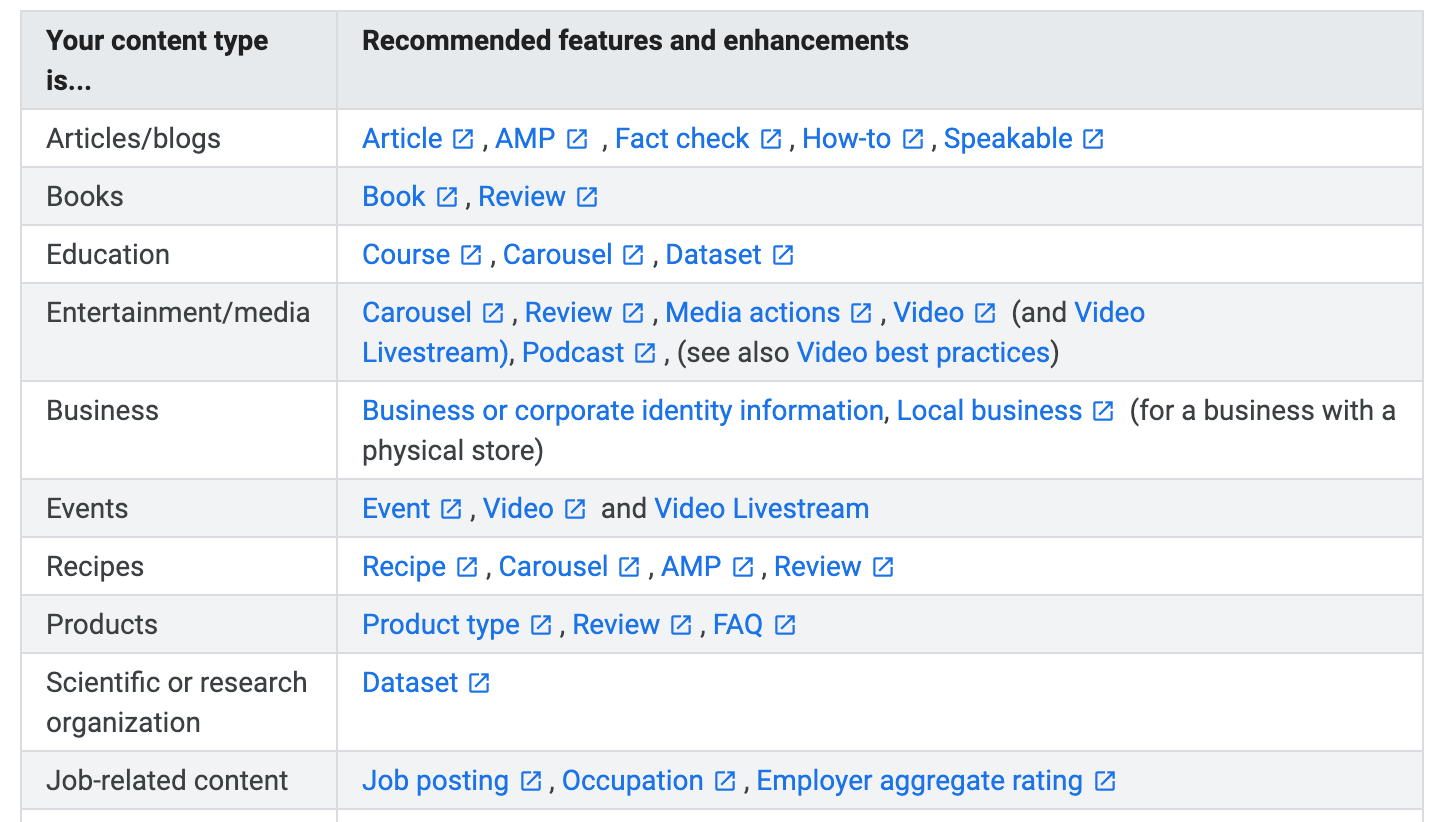
Step 2: Get the specifications for each type
Next, visit the Search Gallery page and study the requirements for your selected types.
Examine which fields are mandatory and make sure that these are included in your code.
For example, if you want to get a rich card for a course, you need to tag the name and description and optionally the course provider as shown below.
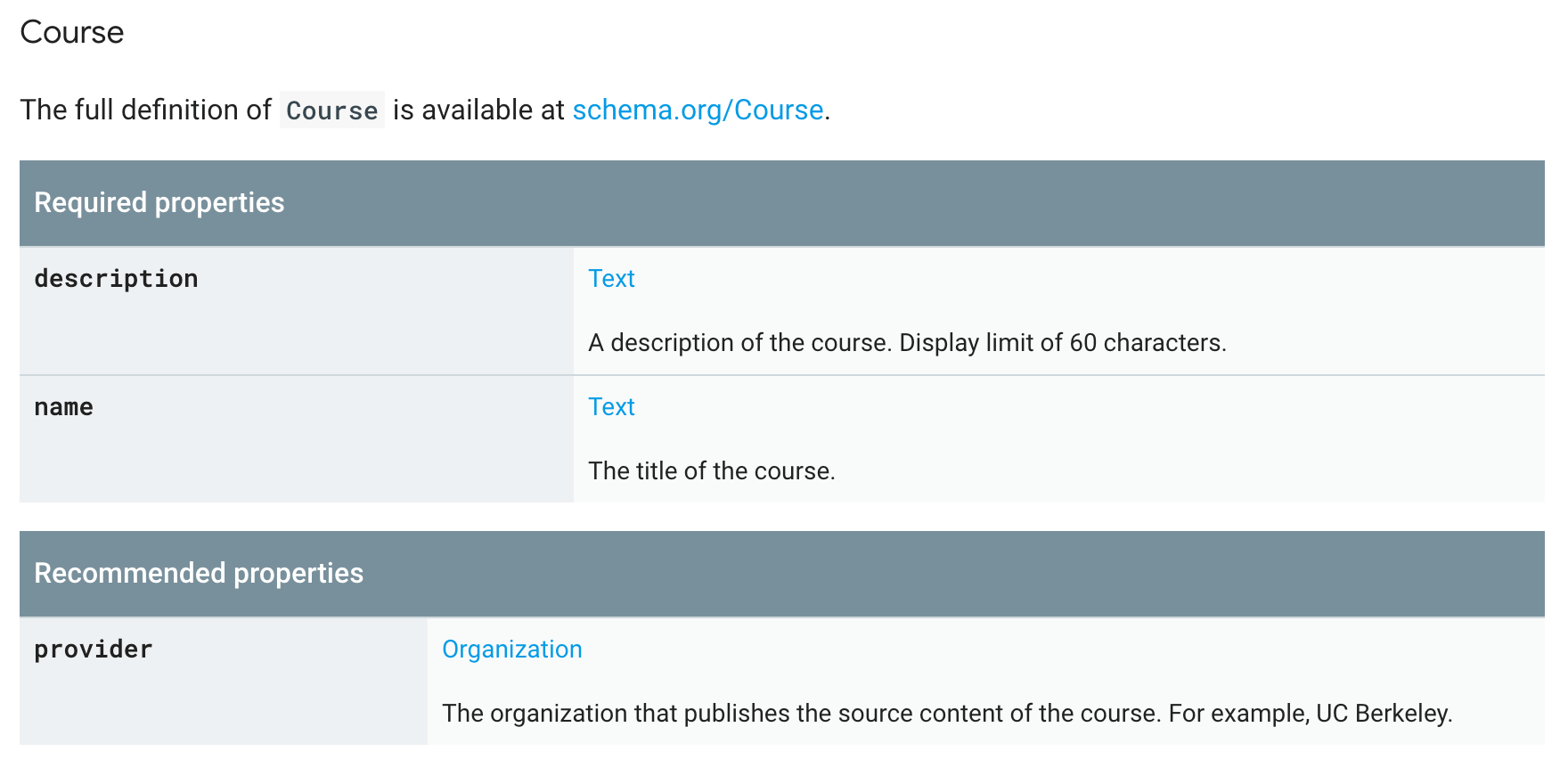
Step 3: Write your Script
Follow the recommendations and write your script using the JSON-LD format. Although both Google and Bing support various formats, the recommended format is using JSON-LD.
You can use the structured data codelab or structured data markup helper tools to help you create the necessary code.
You can also read this guide for step-by-step instructions.
Here is an example of how a script looks like.
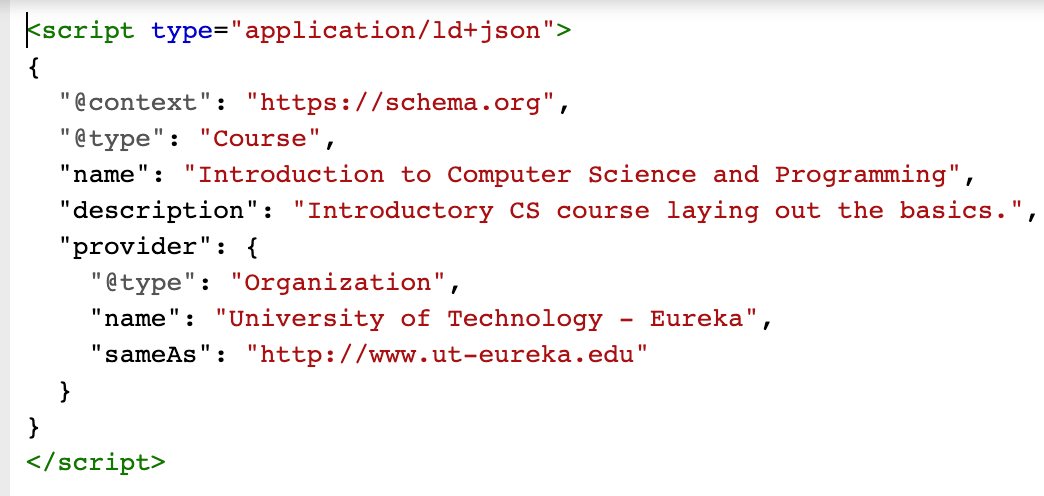
Step 4: Test your code
Once you have your script ready, the next step is to test your implementation with the structured data testing tool.
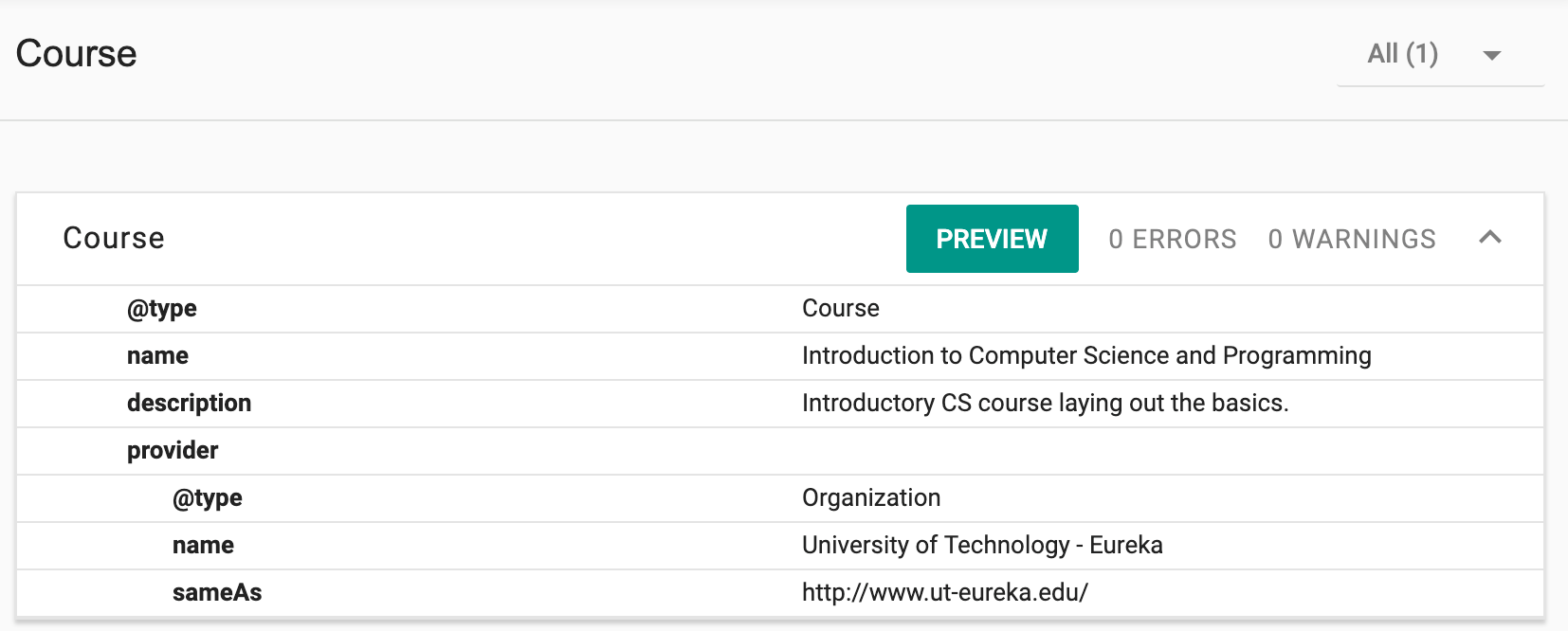
You can also use the Google rich results testing tool, which is friendlier than the structured data testing tool.
Step 5: Add the scripts to your website
Next, you need to copy the script and add it to the <HEAD> section of your HTML page.
Important: You only need to add the structured data to the related pages and not to ALL site pages. For example, if you have structured data for recipes, you need to add it to pages that have recipes and not to your blog or other pages.
Tip 1: To avoid changing each page manually, you can hire a developer to add the script with code so that it is auto-generated for your pages.
Tip 2: Depending on your platform there are tools that can automate the generation of the required structured data, without having to go through all the manual tests above.
For example, if you are on WordPress you can use the Yoast SEO plugin for the following types: Webpage, Organization, Person, Article, Image, Video (Premium Version), Local SEO (through the Local SEO Add-on).
If you are using Woocommerce, it automatically adds structured data for products.
Regardless of your chosen method, always use the structured data testing tool, to make sure that your implementation is correct.
Step 6: Monitor Google Search Console for errors
One of the ways to monitor the performance of your rich snippets and also troubleshoot any errors is through the Google Search Console.
Search Appearance Reports
Login to Google Search Console and click on SEARCH RESULTS under PERFORMANCE.
Click on SEARCH APPEARANCE and then RICH RESULTS.
Then click on PAGES to see which of your pages show as rich cards in the results. You can also see how many clicks you got, impressions and other useful information.
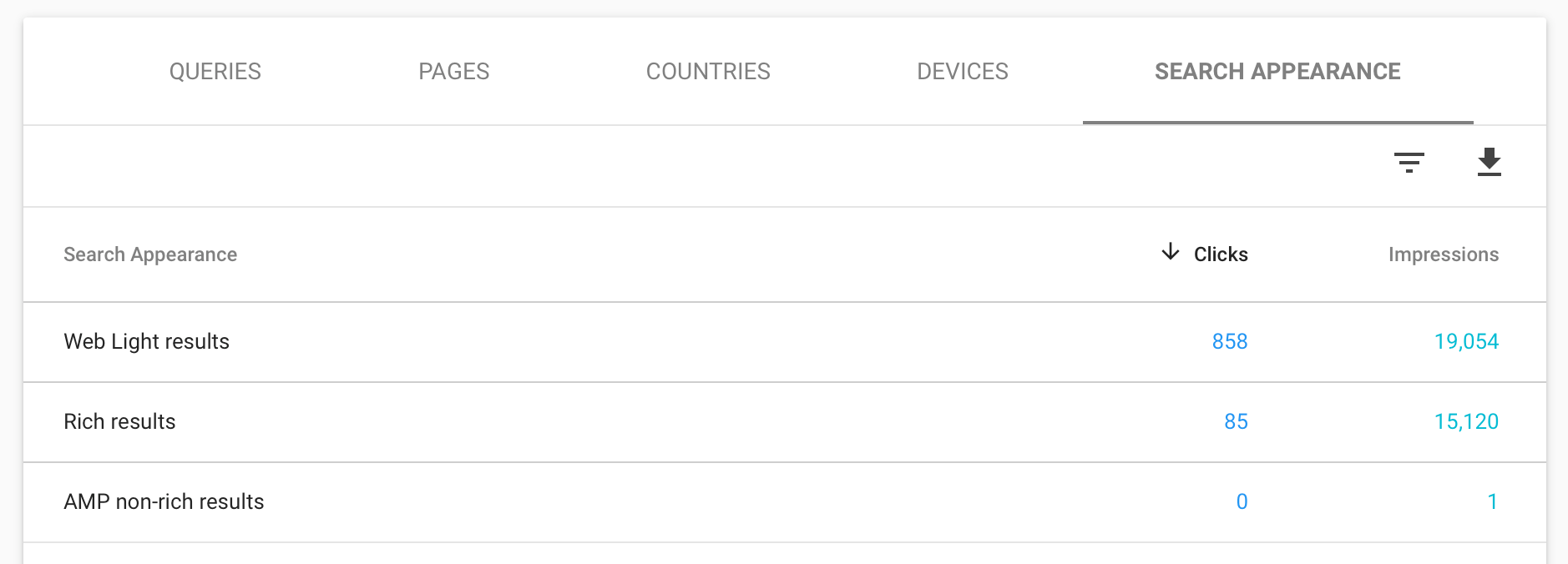
Enhancement Reports
You can use the enhancement reports to troubleshoot structured data errors.
Login to Google Search Console and click on one of the reports under ENHANCEMENTS.

URL Inspection Tool
You can also test a page for structured data errors using the URL Inspection tool.
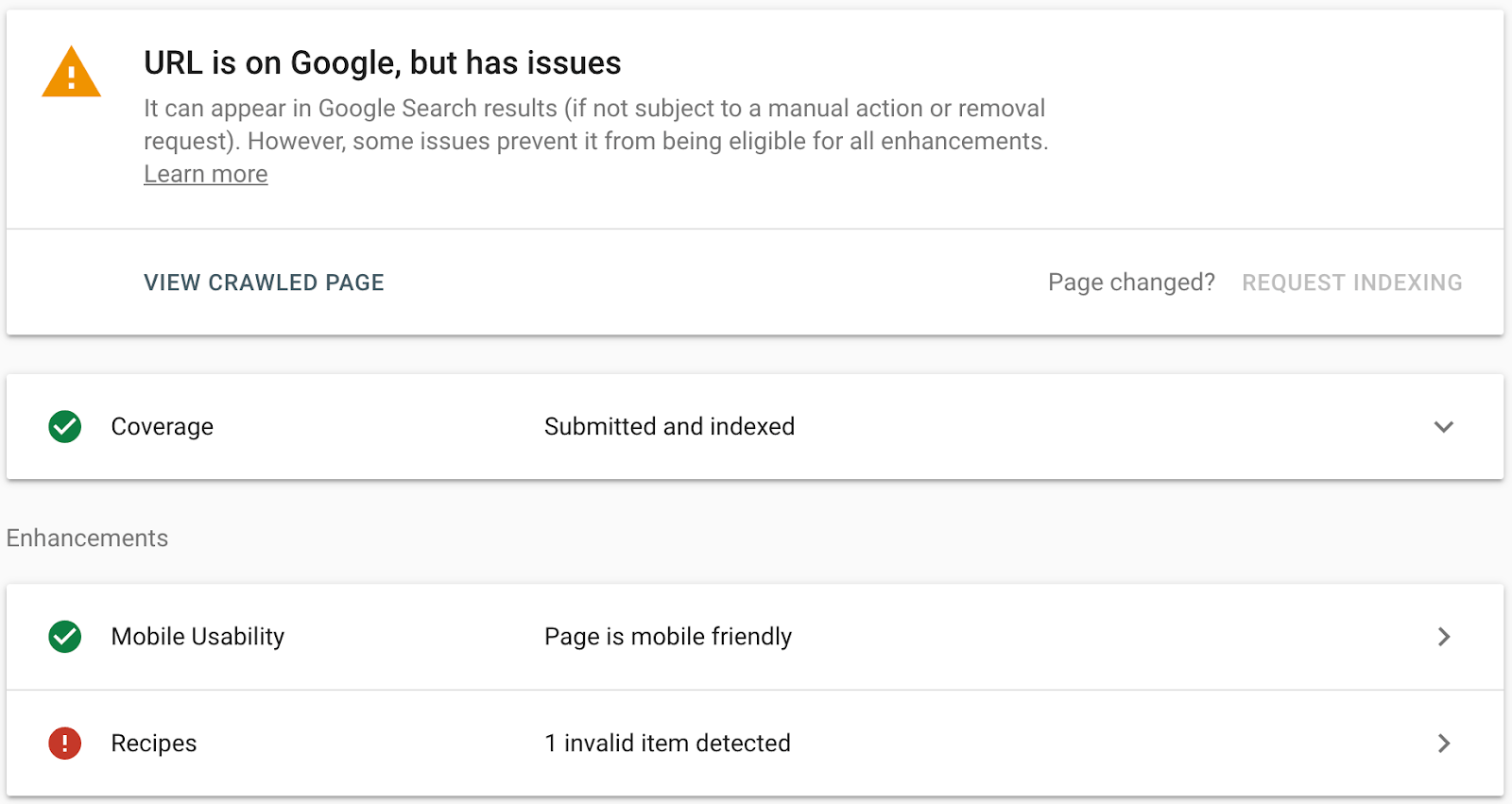
Key Learnings
Rich snippets or Rich cards are gradually replacing the traditional ‘plain blue link’ snippets we are used to see in Google search results.
They contain graphical elements and this makes them more attractive to users and they receive more clicks which means more traffic to your website.
If you want your website to be eligible for a rich snippet, you need to implement structured data.
The process is simple, choose the right type, write the script, test your code with the testing tool and add it to your website.
Google is continuously working on improving their search results and rich results is one of the features they started invest heavily.
The post Rich Snippets: The Definite Guide (2019 Update) appeared first on reliablesoft.net.
